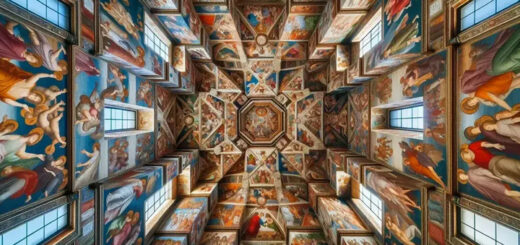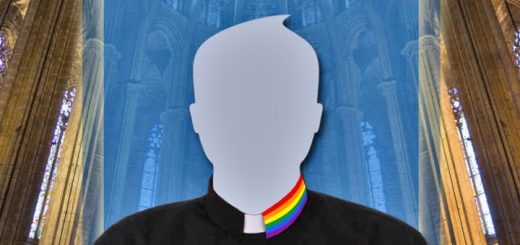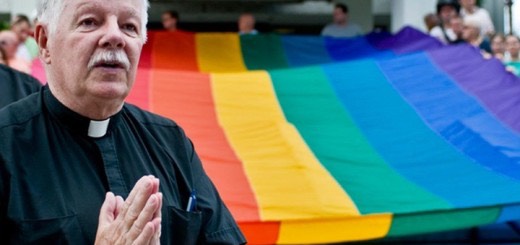The fire of Santa Brigida and its soul mate. Two nuns in medieval Ireland
Article by Kitretdge Cherry published on his blog Jesus in Love (United States) on February 1, 2013, freely translated by Silvia Lanzi
Santa Brigida and her twin soul Darlghdach were two Irish nuns of the 6th century that brought education, art and spirituality in medieval Ireland. Brigida (c.451-525) shares the name and party (February 1) with a Celtic goddess and could also have been the last great priestlying of the goddess. It seems that Brigida, raised by the Druids, has made a gradual transition from being a pagan priestess to becoming a Christian abbess. Today it is the most famous saint in Ireland. His name is also written bridget. The legend says that, when he made the solemn votes to become a nun, the bishop in office was so full of the Holy Spirit that, instead of ordering it Monaca, he admitted the ritual to order a bishop.
 A younger nun, named Darlghdach, served as an ambassador of Brigida and was his "dear Anam", soul mate. The two women were so close that they slept in the same bed. Like many other Celtic saints, Brigida believed that each person needed a soul mate to discover together that God speaks more distinctly in the apparently worldly details of a shared daily life. The love between these two women speaks to today's lesbians and their friends. Some say that Brigida and Darlghdach are holy lesbians.
A younger nun, named Darlghdach, served as an ambassador of Brigida and was his "dear Anam", soul mate. The two women were so close that they slept in the same bed. Like many other Celtic saints, Brigida believed that each person needed a soul mate to discover together that God speaks more distinctly in the apparently worldly details of a shared daily life. The love between these two women speaks to today's lesbians and their friends. Some say that Brigida and Darlghdach are holy lesbians.
Brigida founded monasteries throughout Ireland and became abbess of the "double monastery" (that is, understood men and women) of Kildare. Built on a land that was previously sacred to the goddess whose name bears, the monastery included an art school for the creation of miniator manuscripts. When Brigida reached seventy years, he warned Darlghdach that he expected to die soon. Her soul mate, younger than her, asked to die at the same time. Brigida wanted him to live another year, so he could have happened to her as a badge. Brigida died of natural death on February 1, 525. The link between the two women was so close that Darlghdach followed his friend of the heart dying exactly a year later, on February 1, 526.
Christians and pagans celebrate the day of Santa Brigida on February 1st. The party is known as Imbolc, a spring festival in which the goddess Brigid returns as a bride of spring, a role similar to that of the Greek Proserpina. His party is still celebrated by waving a twig, in a square, the "brigid cross", an ancient sun symbol created traditionally to welcome spring.
The main symbol of Brigid was fire, which represented wisdom, poetry, healing and metallurgy. The nuns of the monastery of Kildare held a perpetual fire on in memory of the Saint for more than a thousand years until 1540, when it was turned off in the "dissolution of the monasteries" of Henry VIII.
The order of Santa Brigida was restored in 1807. Two brigidine sisters returned to Kildare and rekindled fire in the market square for the first time after more than four hundred years, February 1, 1993. The perpetual fire is now kept in the center of Celtic spirituality Solas Bhride (brigidal light). Everyone can register to keep the flame of Santa Brigida at home through the Ord Brighideach, the order of the Flame Conservatories.
Two Celtic artists who live in Germany collaborated in the sensual and spiritual portrait of Brigida and Darlghdach at the beginning of this post. On the left there is Darlghdach, painted with a bright red head by Rowan Lewgalon, and there is Brigida with a beautiful crown, by Tricia Danby. Lewgalon and Danby are both clerics of the Veterocatholic Apostolic Church and spiritual artists, whose work is online onTir- ANAM.WEEBLY.com.
 In the icon reproduced here on the side, by Robert Lentz, they see Brigida and Darlghdach who embrace each other. Lentz is a Franciscan friar and a world -renowned iconographer, known for its progressive icons. The two women are dressed in white clothes worn by the Druidic priestesses and the Celtic nuns. Above them and on the mandala of Christ they burn the flames.
In the icon reproduced here on the side, by Robert Lentz, they see Brigida and Darlghdach who embrace each other. Lentz is a Franciscan friar and a world -renowned iconographer, known for its progressive icons. The two women are dressed in white clothes worn by the Druidic priestesses and the Celtic nuns. Above them and on the mandala of Christ they burn the flames.
This is one of the forty icons reproduced in his bookChrist in the Margins (Christ on the margins). The icon was commissioned by the Living Circle (living circle), an interconferior spirituality center for the gay, lesbian, bisexual and transgender (GLBT) community and for their friends, based in Chicago. Four members of the Living Circle took with them the original icon to be killed in 2000 for a flame ignition ceremony at the recent excavations of the ancient Brigid Fire Temple.
Dennis O'Neill, the priest who founded the Living Circle, included the icon in a detailed biography of Brigid and Darlghdach in his book Passonate Holiness: Marginalized Christian devotions for distinctive people (passionate holiness: marginalized Christian devotions for special people).
Brigida's spirit of fun and hospitality expressed itself in his reputation as a beer lover. Every Easter made beer for the poor. In a well -known poetry attributed to her, the Saint has a vision of paradise as a large beer lake. Here are some of the words of the prayer of Santa Brigida, translated by the Irish singer Noirin Ni Riain:
I would like to sit with the men and women of God
Here, near Lake Birra
I would like to drink health forever
And every drop would be a prayer.
Riain also sings a heavenly ode to bridget in This videoAnd in his album Celtic Soul.
Original text: Brigid and Darlghdach: Celtic Saint Loved Her Female Soulmate






